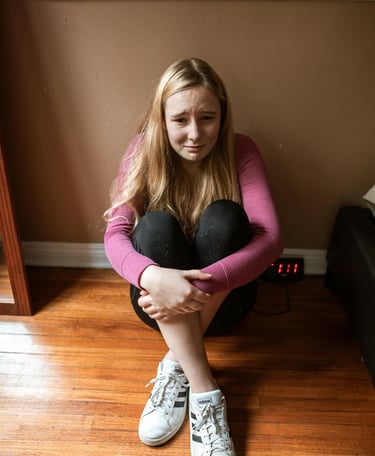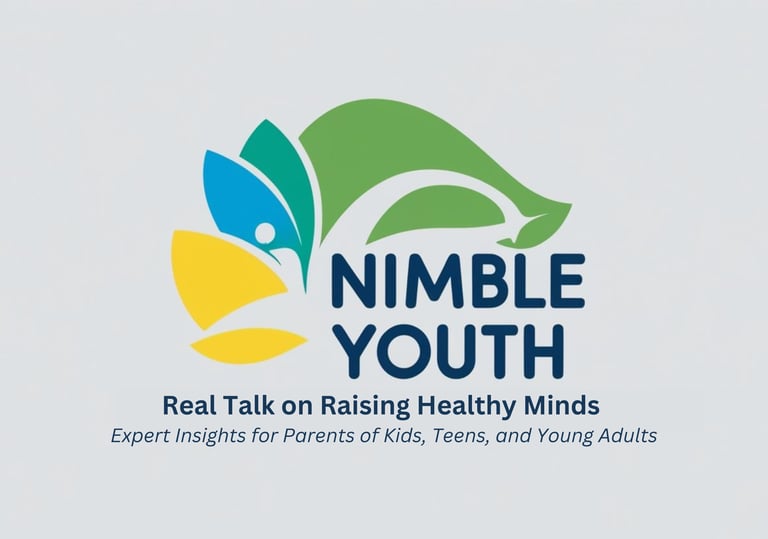Episode Six: The Silent Storm: Anxiety and Depression in Adolescent Girls
Today, we’re talking about a mental health crisis that is quietly, and sometimes invisibly, reshaping the lives of millions of young people—particularly adolescent girls. Anxiety and depression have been on the rise among teens for over a decade, but the numbers for girls are especially stark—and deeply concerning. Our guest today is Dr. Gretchen Hoyle, a pediatrician with 25 years of experience and a focus on child and adolescent mental health.
M. Butterman
4/26/20252 min read


Episode 6 – The Silent Storm: Anxiety and Depression in Adolescent Girls
Welcome to Episode 6 of Nimble Youth!
Today, we’re diving into a growing mental health crisis that is quietly—and sometimes invisibly—reshaping the lives of millions of young people: anxiety and depression in adolescent girls.
Our guest, Dr. Gretchen Hoyle, a pediatrician with 25 years of experience specializing in child and adolescent mental health, helps us unpack why this crisis is intensifying, how to spot it, and what steps parents and caregivers can take to offer meaningful support.
Topics We Cover:
📈 Understanding the Big Picture
Anxiety and depression in teens are driven by many factors: genetics, development, environment, and family dynamics.
Dr. Hoyle discusses the impact of the "phone-based childhood," including social deprivation, sleep loss, fragmented attention, and tech addiction (based on Jonathan Haidt’s The Anxious Generation).
👩🦰 Why Adolescent Girls Are Especially Affected
Body image sensitivity and social comparison
Amplified relational aggression through social media
Emotional contagion within peer groups
Risks of online exploitation
The structural, not moral, design flaws in the digital and social environment girls are growing up in
🩺 What Parents Can Do
Start with your pediatrician: They can assess, screen, and guide next steps.
Understand common tools:
GAD-7 for anxiety
PHQ-9 for depression
SCARED Questionnaire for categorizing anxiety symptoms
🧠 Screening Tools Explained
GAD-7: Scores categorize anxiety from minimal to severe.
PHQ-9: Assesses severity of depressive symptoms, with special attention to suicide risk.
💬 Treatment Options
Mild cases: Support, therapy, and monitoring
Moderate to severe cases: Therapy plus possible medication
Therapy approaches discussed include:
Cognitive Behavioral Therapy (CBT)
Mindfulness-Based Cognitive Therapy
EMDR
Breathwork and somatic therapies
Neurofeedback
💊 Understanding Medications
SSRIs (Prozac, Zoloft, Lexapro) as first-line treatments
SNRIs and Buspirone for specific cases
What parents should know about effectiveness, side effects, and timelines for improvement
🧡 Final Takeaways
Anxiety and depression are rising rapidly among teen girls—and early intervention is critical.
Social media is a major contributor, but other developmental and relational factors are at play.
Pediatricians are key partners in recognizing and addressing mental health needs.
With awareness, boundaries, and compassion, parents can help their daughters thrive in a complicated world.
“We can’t turn back time, but we can parent with awareness, boundaries, and compassion.”
Resources and References:
The Anxious Generation by Jonathan Haidt
CDC Youth Risk Behavior Survey (2021)
JAMA Pediatrics: Anxiety Disorder Trends in Adolescents
Don’t forget to subscribe at www.nimbleyouthpodcast.com for show notes, research links, and future episodes!
Coming Up Next:
We’ll shift the focus to adolescent and young adult males and explore the unique mental health challenges facing them in today's world.
🎧 See you next time on Nimble Youth!
© 2025. All rights reserved.


